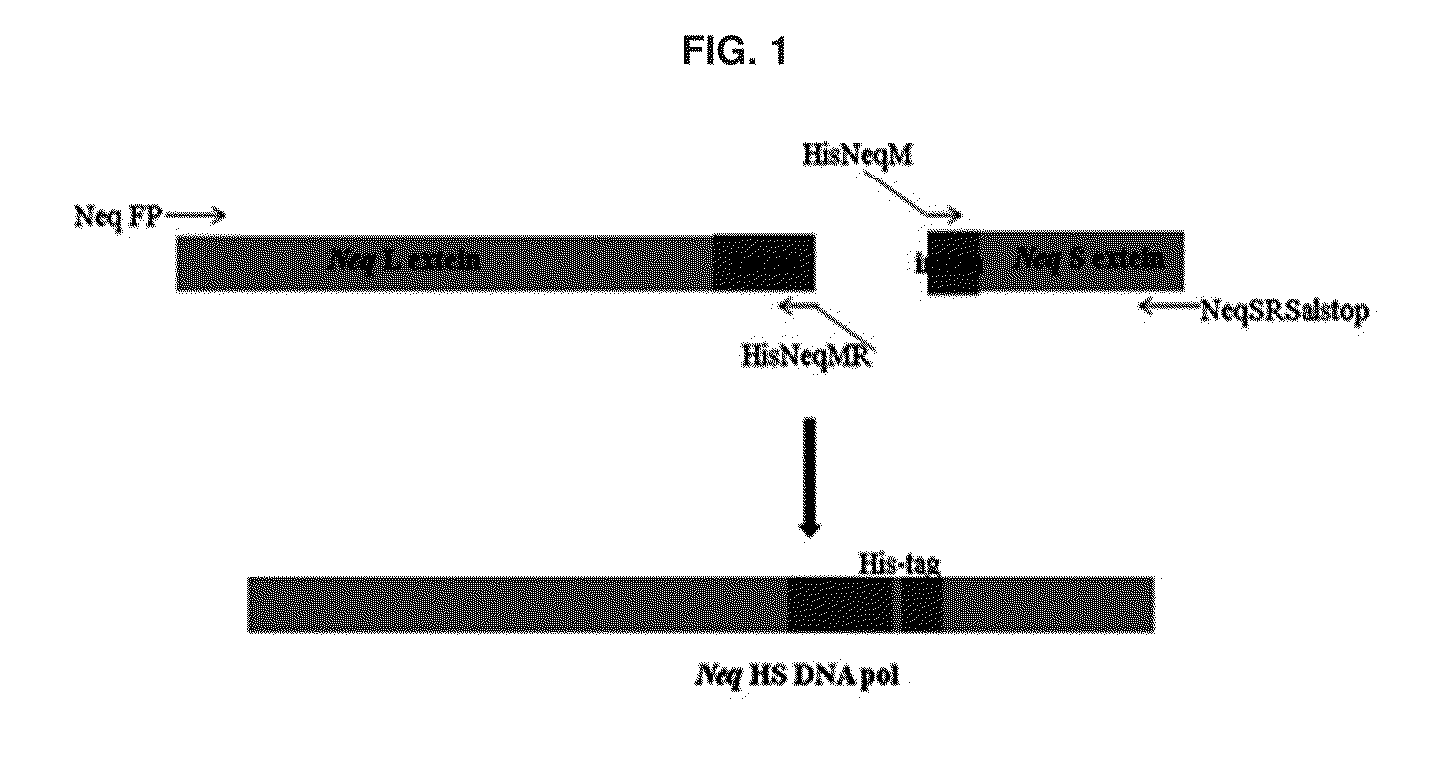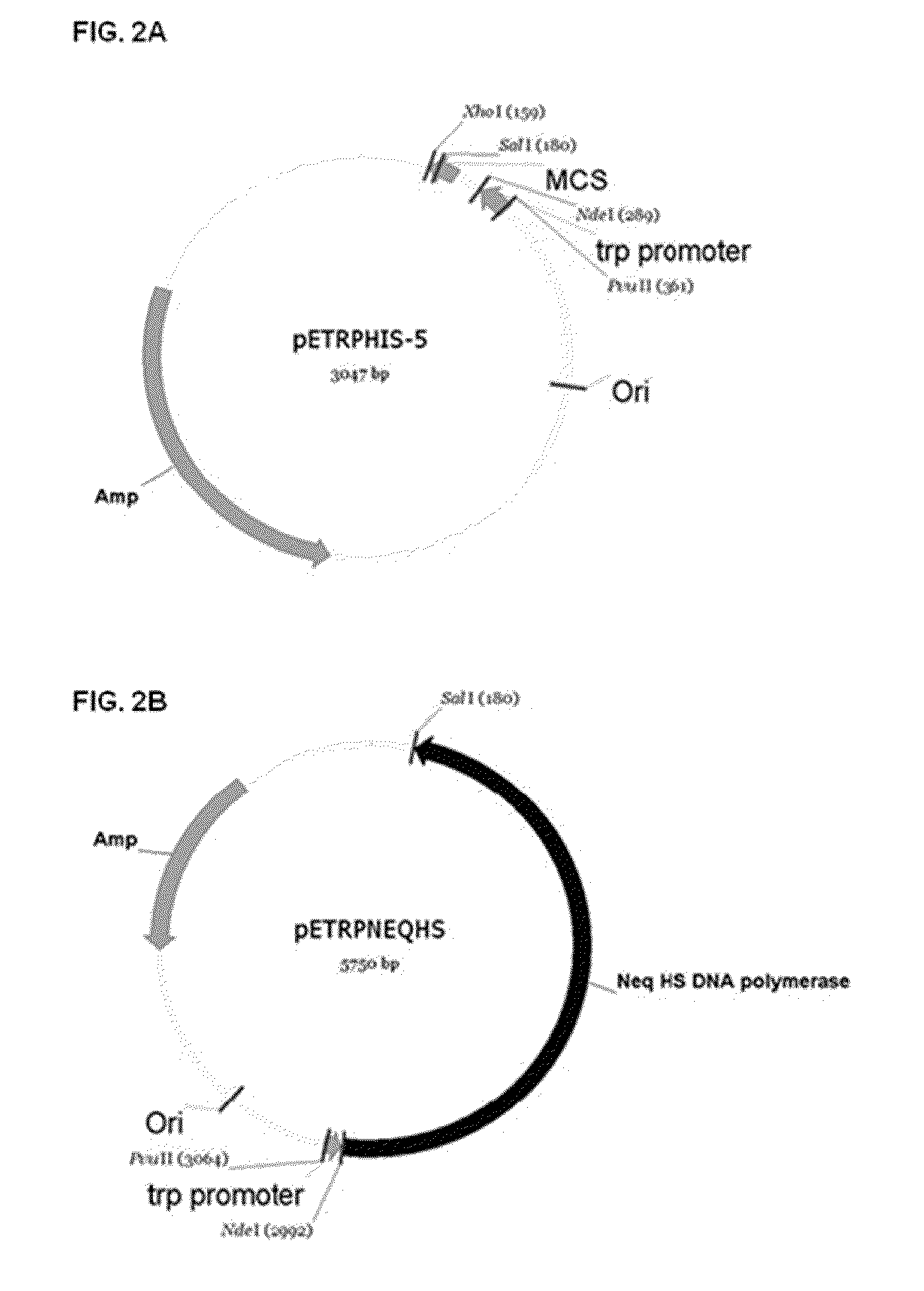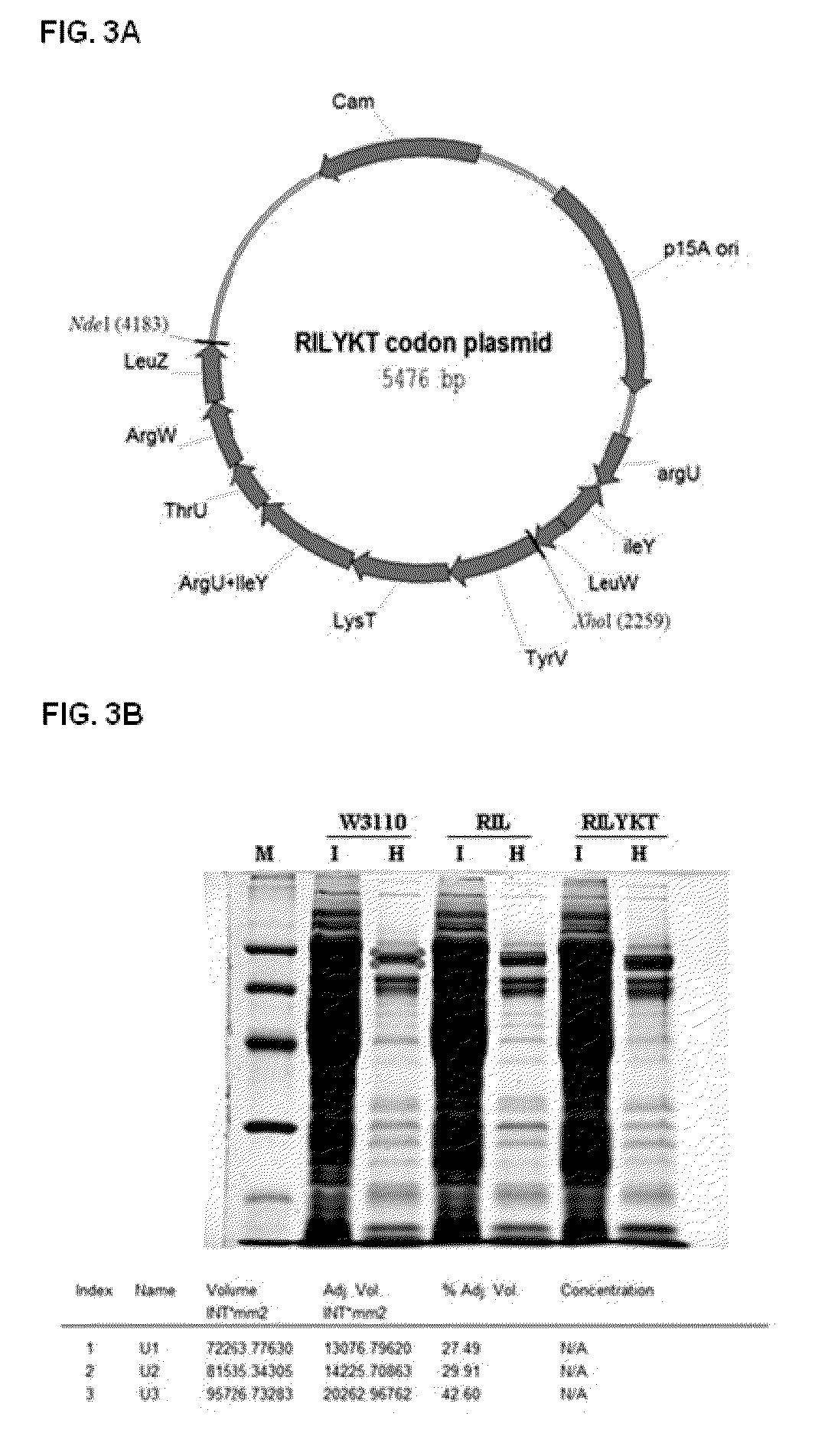Mutant Neq HS DNA polymerase derived from Nanoarchaeum equitans and its application to hot-start PCR
a technology of i>neq/i>hs dna polymerase and i>neq /i>, which is applied in the direction of transferases, polypeptides with his-tags, peptides, etc., can solve the problems of non-specific primer binding, especially severe barrier, and interfere with detection of the pcr product of interest, so as to improve the pcr amplification ra
- Summary
- Abstract
- Description
- Claims
- Application Information
AI Technical Summary
Benefits of technology
Problems solved by technology
Method used
Image
Examples
example 1
Preparation of Nee HS DNA Polymerase in the Form of Precursor in which Inteins of Neq L and Neq S Fragments are Linked with Each Other
[0079]In this Example, the inteins of Neq L and Neq S fragments of a Neq DNA polymerase were linked with each other to prepare a Neq HS DNA polymerase in the form of a precursor of Neq DNA polymerase. Especially as shown in FIG. 1, recombinant Neq HS DNA polymerases were designed to be easily purified through a His-tag affinity column by inserting a His-tag sequence composed of six histidine residues between the inteins of the Neq L and Neq S fragments at a gene level upon construction of a Neq HS DNA polymerase gene.
[0080]According to the method disclosed in Korean Patent No. 10-1230362, genes of the Neq L and Neq S fragments cloned into a pET-22b (+) expression vector were ensured, and 4 PCR primers (SEQ ID NOS: 1 to 4) were synthesized based on information on the gene sequence. The Neq L fragment gene and the Neq S fragment gene were linked through...
example 2
Construction of tRNA Codon Plasmid RILYKT to Increase Expression Level of Neq HS DNA Polymerase Gene
[0090]E. coli W3110 was transformed with the newly constructed expression vector expressing the Neq HS DNA polymerase gene in the presence of ampicillin to screen transformants (E. coli W3110 / pETRPNEQHS). Thereafter, the screened transformants were cultured at 37° C. for approximately 20 hours in an M9 minimal medium supplemented with 0.1% glucose and 0.5% casamino acid, and analyzed through SDS-PAGE. As a result, it was revealed that the Neq HS DNA polymerase gene was expressed (FIG. 3B). However, since the Neq HS DNA polymerase gene had a low expression level, the codon frequencies between the Neq HS DNA polymerase and an E. coli strain were examined to enhance an expression level of the gene. As a result, the codons exhibiting a significant difference in codon frequencies were compared and are summarized in the following Table 1.
[0091]
TABLE 1Comparative analysis of codons exhibitin...
example 3
Preparation of Mutant Neq HS DNA Polymerase Genes
[0117]Point mutations in the Neq HS DNA polymerase gene (SEQ ID NO: 5) were induced using a QuikChange site-directed mutagenesis method (see the Stratagene manual for QuikChange® Site-Directed Mutagenesis Kits). Alanine (Ala), asparagine (Asn), and serine (Ser) arranged at 523rd, 540th and 185th positions in the Neq DNA polymerase, respectively, were chosen as target residues to be mutated. The primers used to obtain the mutant Neq HS polymerase genes from the Neq HS DNA polymerase gene are listed in the following Table 2.
[0118]First, A523R, in which nucleic acids corresponding to the alanine (Ala) at the 523rd position were replaced with those corresponding to the arginine (Arg), was prepared using the Neq HS DNA polymerase gene as a template. In this case, the A523R was selected since a mutant Neq A523R of the Neq DNA polymerase from which the intein was already removed had better PCR and amplification rates than the wild-type Neq D...
PUM
| Property | Measurement | Unit |
|---|---|---|
| temperature | aaaaa | aaaaa |
| temperature | aaaaa | aaaaa |
| temperature | aaaaa | aaaaa |
Abstract
Description
Claims
Application Information
 Login to View More
Login to View More - R&D
- Intellectual Property
- Life Sciences
- Materials
- Tech Scout
- Unparalleled Data Quality
- Higher Quality Content
- 60% Fewer Hallucinations
Browse by: Latest US Patents, China's latest patents, Technical Efficacy Thesaurus, Application Domain, Technology Topic, Popular Technical Reports.
© 2025 PatSnap. All rights reserved.Legal|Privacy policy|Modern Slavery Act Transparency Statement|Sitemap|About US| Contact US: help@patsnap.com



